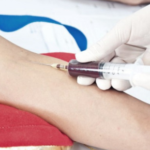1. Introduction to Skin Health
Explore the basics of skin health, including its color, temperature, and condition, and why it’s essential to maintain them.
2. Normal Skin Color
Learn about the range of normal skin colors, influenced by genetics, ethnicity, and sun exposure, and how variations are perfectly healthy.
3. Factors Affecting Skin Color
Discover the factors that can affect skin color, such as blood flow, melanin production, and skin conditions like eczema or rosacea.
4. Skin Temperature Regulation
Understand how the skin regulates temperature through processes like sweating, blood flow regulation, and insulation from fat layers.
5. Ideal Skin Temperature
Learn about the ideal skin temperature range, typically around 91-95 degrees Fahrenheit (32-35 degrees Celsius), which indicates healthy circulation and thermoregulation.
6. Environmental Influence on Skin Temperature
Explore how environmental factors like weather, humidity, and exposure to heat or cold can affect skin temperature temporarily.
7. Skin Condition Indicators
Understand how skin condition indicators such as hydration, texture, and elasticity can reflect overall health and well-being.
8. Hydration Levels
Learn about the importance of maintaining optimal skin hydration levels for a healthy complexion and proper skin function.
9. Texture and Smoothness
Discover how smooth, even skin texture indicates good circulation and proper exfoliation, while rough texture may signal underlying issues.
10. Elasticity and Firmness
Understand how skin elasticity and firmness reflect collagen and elastin levels, key proteins that maintain skin structure and resilience.
11. Signs of Skin Health
Explore signs of healthy skin, including even coloration, smooth texture, adequate hydration, and resilience to pressure.
12. Skin Conditions to Monitor
Learn about common skin conditions such as acne, eczema, psoriasis, and dermatitis, and how they may affect skin color, temperature, and condition.
13. Sun Protection
Understand the importance of sun protection in maintaining healthy skin color, temperature, and condition, and reducing the risk of sun damage and skin cancer.
14. Skincare Routine
Explore the basics of a healthy skincare routine, including cleansing, moisturizing, exfoliating, and sun protection, to maintain optimal skin health.
15. Diet and Nutrition
Learn about the role of diet and nutrition in supporting healthy skin, including foods rich in antioxidants, vitamins, and essential fatty acids.
16. Stress Management
Understand how stress can affect skin health, including color, temperature, and condition, and the importance of stress management techniques for overall well-being.
17. Regular Checkups
Explore the benefits of regular skin checkups with a dermatologist or healthcare provider to monitor changes in skin color, temperature, and condition.
18. Lifestyle Factors
Understand how lifestyle factors like smoking, alcohol consumption, sleep quality, and exercise can impact skin health and appearance.
19. Hormonal Changes
Learn about how hormonal changes, such as those during puberty, pregnancy, or menopause, can affect skin color, temperature, and condition.
20. Medications and Treatments
Explore how certain medications and medical treatments can impact skin health, including changes in color, temperature, and condition as potential side effects.
21. Environmental Exposure
Understand how exposure to pollutants, chemicals, and irritants in the environment can affect skin health and contribute to changes in color, temperature, and condition.
22. Personalized Skincare
Learn about the importance of personalized skincare routines tailored to individual skin types, concerns, and lifestyle factors.
23. Holistic Approach to Skin Health
Explore the benefits of a holistic approach to skin health, encompassing skincare, diet, lifestyle, stress management, and environmental factors.
24. Early Detection and Intervention
Understand the importance of early detection and intervention for skin conditions or changes in color, temperature, and condition to prevent complications and promote optimal health.
25. Conclusion: Embracing Healthy Skin
In conclusion, maintaining normal skin color, temperature, and condition is essential for overall health and well-being. By understanding the factors that influence skin health and adopting healthy skincare habits and lifestyle practices, you can achieve and maintain radiant, healthy skin for years to come.


